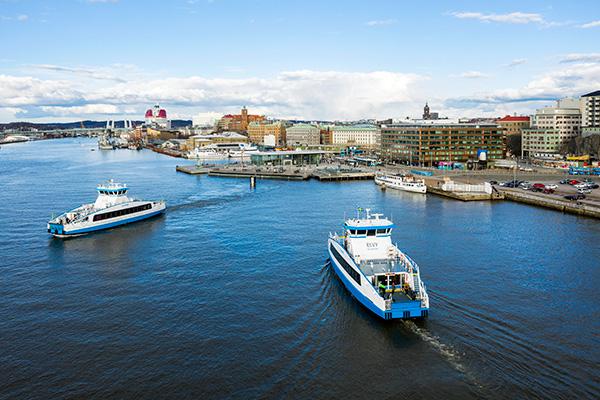Equipment
Ports
Advanced hybrid technology for passenger ferry M/V ’Eloise’

Constructed by the Uudenkaupungin Työvene shipyard on the southwestern coast of Finland, M/V ’Eloise’ is the latest addition to Västtrafik’s fleet of short-range commuter vessels operating in Gothenburg in Sweden. Utilising the latest hybrid technology, the passenger ferry is exceptionally environmentally-friendly, with very low CO2 emissions.
Known as a builder of reliable and durable vessels, the Finnish shipyard in Uusikaupunki was given the challenging task of constructing new kinds of hybrid passenger vessels for short-range commuting, nine years ago.
”In 2013, we participated in the first bidding competition for building hybrid vessels,” says deputy director Juha Granqvist from Uudenkaupungin Työvene Oy.
The competition had been arranged by Västtrafik, a company owned by the municipalities around the city of Gothenburg in southern Sweden. Västtrafik eventually decided to have a series of four vessels built.

The final one in the series, M/V Eloise, was ordered in the early spring of 2021. Construction was started at Uusikaupunki shipyard in May 2021.
Newest vessel ready for delivery
The first two ships – Älveli and Älfrida – were completed in 2015. The third one, M/V Elvy, was delivered in 2018.

For the fourth vessel Eloise, shipbuilding was completed without any problems and even ahead of schedule.
”In April 2022, the new vessel was practically ready for delivery. And in May after the final tests, the vessel moved to Gothenburg where she will operate as a passenger ferry on Göta river,” Granqvist explains.
The new vessel has a length of 33 metres and maximum speed of 11 knots. The ship can carry 298 passengers and 80 bicycles. She will be typically operated on short trips of only 5 to 10 minutes.

Longer stretches of
electrical cruising
According to Mr. Granqvist, the hybrid technology that has been utilised in the construction of the four Västtrafik’s vessels has been optimised ship by ship.
”Right from the start, Västtrafik wanted hybrid technology for the ships. For M/V Eloise, even more advanced hybrid solutions were called for,” says Granqvist.
”In this case, we installed lighter but more efficent electric thrust motors and generators, delivered by Mets. The solution was based on permanent-magnet DC motors and the utilisation of larger-sized lithium batteries manufactured by EST Floattech in the Netherlands.”

”All of the four Västtrafik vessels have truly lightweight construction. The hull is made of steel, but thin-layered materials have been used when possible.”
In M/V Eloise, large batteries replace separate ballast constructions that were utilised aboard earlier ships in the series.

The new vessel can be operated electrically for longer periods of time than the three previous ships.
”In principle, similar solutions could be applied for the construction of even larger low-emission ships. Such technologies will undoubtedly be very much in demand in the near future,” Granqvist expects.
More information: tyovene.com
by: Ari Mononen



